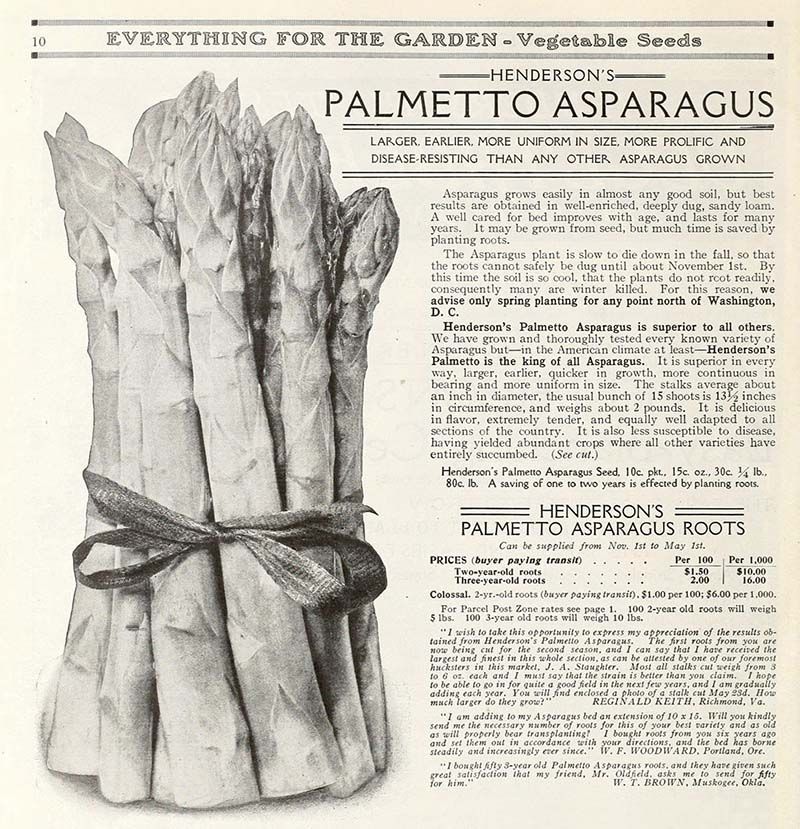A happy coincidence brought the ‘Palmetto’ asparagus to prominence over a century ago

Before the turn of the century, New York Gilded Age millionaires made asparagus the country’s most cherished vegetable. Their insatiable appetite for steamed spears with hollandaise set Charleston farmers digging their beds; those who shipped spring’s first asparagus could thus command the highest price.
New York seedsman Peter Henderson dispatched major vegetable broker John Nix to develop large-scale plantings in Mount Pleasant—an area chosen for its affordable, fertile acreage and access to transportation. Well-heeled gourmands preferred the thick-stemmed ‘Conover’s Colossal’ variety, and that’s what Nix planted—“until...he noticed his neighbor’s Asparagus, under the same conditions, did considerable better than his own, being not only much earlier, yielding better, but more even and regular in growth,” Henderson wrote in his 1866 catalog, Everything for the Garden (pictured above).
So Nix secured some ‘Argenteuil’ roots (a wild French asparagus in existence since the reign of Louis XIV) from his neighbor, Alfred Jouannet. Something happened in Nix’s beds—perhaps a natural cross between the ‘Conover’s Colossal’ and the ‘Argenteuil.’ This new strain he discovered grew quicker, thicker, and healthier than the ‘Argenteuil,’ and proved more prolific and disease resistant than the ‘Conover’s Colossal.’ When premiering the vegetable in his 1886 catalog, Henderson named the hybrid the ‘Palmetto.’
Instantly, this Lowcountry horticultural creation became a standard Southern crop. Its superiority to other varieties lay in its partial resistance to asparagus rust (Puccinia asparagi), a fungus that defoliates healthy plants. The asparagus craze had made the fungus widespread and lethal. But while other popular varietals experienced fungal devastation, the ‘Palmetto’ thrived.
When the boll weevil arrived in the 1910s, fearful Upstate cotton farmers joined their Charleston cousins in planting asparagus beds. Statewide plantings would make South Carolina one of the five great producers from 1919 to 1939. At the boom’s height, an acre of spears brought $180, four times the return of cotton. Plantings circled Charleston but also expanded to form an “asparagus belt.” From Augusta to Edgefield, Saluda to Monetta, everyone planted ‘Palmetto’.
Then, in the 1930s, California and Florida stole the market. The thin ‘Mary Washington’ eclipsed the ‘Palmetto’ for its total resistance to rust. Fat asparagus went out of fashion. Now, Charleston’s most famous vegetable is functionally extinct, but food revivalists, like Monetta Asparagus Farm’s Jeremy Fallaw, are intent on reinstating South Carolina as an asparagus powerhouse—with the fat, tender ‘Palmetto’ featured prominently.
Image courtesy of Biodiversity Heritage Library via Wikimedia Commons